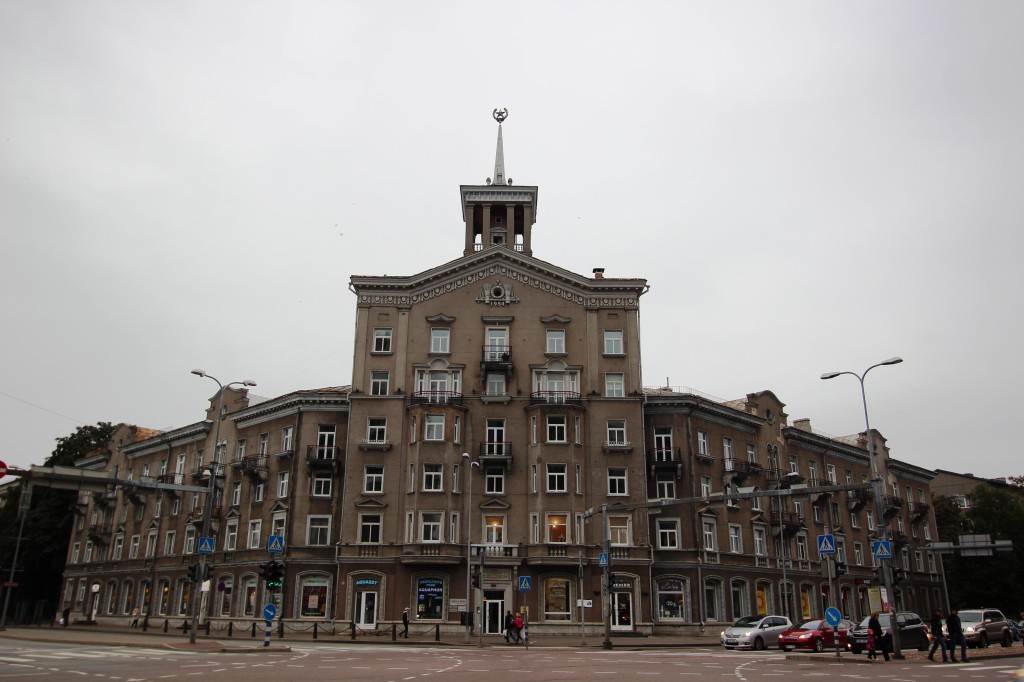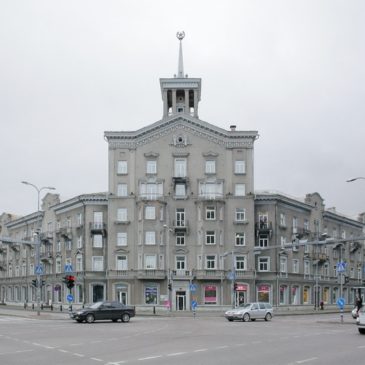Tallinn is renowned for its picturesque medieval Old Town, but its Soviet past has also left an indelible mark on its urban landscape. From monumental structures to residential complexes, Tallinn’s Soviet architecture tells a compelling tale of history, resilience and hidden secrets. Join me on a journey to uncover some of the most captivating Soviet buildings that have survived in modern Tallinn.
#1 Viru Hotel

Tallinn’s very first skyscraper has been dominating the skyline of Tallinn’s city centre since 1972. The hotel was run by Intourist (the Soviet tourism board) and was the only place that visitors from outside the Soviet Union could stay. Why? Well, at the end of the Soviet days a secret KGB surveillance facility was found on the top floor of the hotel confirming that this grand structure had been the centre of a huge spying operation. The rooms were bugged, phones tapped and even dinner plates were fitted with hidden microphones. There is a fascinating museum on the top floor of the hotel today where you can see the remains of this spying operation!
#2 Vene Kultuurikeskus (Russian Culture Centre)

The Russian Culture Centre was completed in 1954 and was originally a house for Naval Officers. Today many of the grand Soviet design features remain, including murals on the outside of the building, red stars, images of Soviet Tallinn painted on the ceiling of the theatre and a hammer and sickle on the roof. Given the feelings towards the Soviet Union it is very interesting to see a structure that has remained so untouched. If you have the opportunity to attend a show in the theatre, you will be amazed at how many Soviet remnants have been preserved inside the main hall.
#3 Kino Sõprus

Cinemas played a pivotal role in Soviet society, serving as venues for entertainment and propaganda alike. Kino Sõprus (a.k.a Friendship Cinema) was built in 1955 in an area that was destroyed by bombs during World War 2. Today it is a striking reminder of the grandeur of Stalinist architecture and the home of the famous Club Hollywood. If you haven’t partied in Club Hollywood, have you really partied in Tallinn?
#4 Soviet Statues

My friend hanging out with Mr. Lenin
Behind the Estonian History Museum lies an outdoor exhibition of Soviet statues. Until recently, this was more like a statue graveyard where these symbols of the Soviet days were simply dumped. Today they have been restored and arranged in a free outdoor exhibition. Stalin, Lenin and Kalinin sit there, with stern faces, stubbornly waiting for a revival that will never come.
Explore Soviet Tallinn with Me!
If you’re curious to dive deeper into Tallinn’s Soviet past, why not explore it with me on a private walking tour? We’ll visit key locations, uncover hidden stories, and get a real sense of what life was like behind the Iron Curtain. Whether you’re a history buff or just love discovering the past in a personal, engaging way, this tour is designed to bring the Soviet era to life. Book your private Soviet Tallinn tour below!
#5 Mustamäe District

As Tallinn expanded during the Soviet era, new residential neighbourhoods like Mustamäe emerged to accommodate the growing population. Of all the construction projects in the Soviet days, this was perhaps the largest. Characterised by its prefabricated concrete apartment blocks and communal spaces, Mustamäe offers insight into everyday life under communist rule, showcasing the principles of Soviet urban planning and architecture. Lasnamäe also has some fascinating Soviet architecture, but it wasn’t actually finished during the Soviet period. Mustamäe, on the other hand, was.
#6 Tartu Road (No. 24)

Register of Cultural Monuments
This imposing building on the corner of Tartu Road and Liivalaia exudes grandeur and authority. It was built in 1957 as an apartment complex for workers of the ‘Dvigatel’ factory (modern day Ülemiste City). With its neoclassical façade and monumental scale, it embodies the architectural style favoured during the early Soviet regime. Interestingly, city officials have decided to keep the communist star that adorns the top of this building.
#7 Keskturg

Tallinn’s Central Market (Keskturg) is a little slice of Soviet life still surviving in modern Tallinn since 1947. This market was (and continues to be) the main shopping spot for many locals. From fruit and veg to clothes, antiques, watches, locksmiths and tobacco, Keskturg has a huge variety of products and has served the citizens of Tallinn well in its time. The market was privatised in the 1990s and there are plans for gentrification, so visit now before it’s too late!
#8 Kosmos Cinema

This quintessential example of Soviet modernist architecture was built in 1964. Its futuristic aesthetic embodies the optimism of the space age and offers a cool contrast to the surrounding buildings on Pärnu street. Furthermore, upon its completion, the largest hall of Kosmos could fit 1015 people! The fountains outside add a touch of Soviet class and still survive until today. The cinema has been operational in recent times but as I write this, it is temporarily closed.
Bonus: Moscow Olympics (1980)
Let’s not forget about 1980! Tallinn was a host city for the Moscow Games and received a large amount of funding, infrastructure and new buildings. I have written a post about the legacy of the Moscow Olympics in Tallinn right here, so go and check it out for more Soviet stuff!
Exploring Tallinn’s Soviet architecture is a journey through time, offering insights into the city’s complex history and evolution. From the opulent Viru Hotel to the humble Mustamäe district, each building tells a unique story, serving as a reminder of Tallinn’s resilience and spirit. Whether you’re a history enthusiast, architecture aficionado, or simply curious traveler, a tour of these Soviet gems is sure to leave a lasting impression, enriching your understanding of this captivating city.









